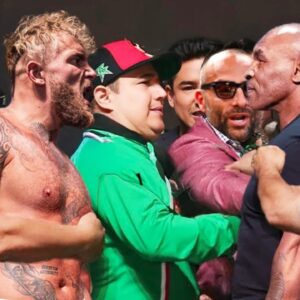The emergence of crossover fights in combat sports has sparked widespread interest, particularly in the comparison between boxing and Muay Thai. The anticipation surrounding the training regimens of Manny Pacquiao, the boxing legend, and Buakaw Banchamek, the Muay Thai superstar, has captivated fans of both disciplines. As these two fighters prepare for their high-stakes showdown, analyzing their training methods side by side reveals unique insights into the distinct approaches of boxing and Muay Thai, showcasing the strengths and strategies of each fighter.
Manny Pacquiao’s training routine is renowned for its intensity and focus on speed and agility. As a former eight-division world champion, Pacquiao has built a legacy on his lightning-fast combinations and footwork. His training regimen typically includes a mix of pad work, heavy bag sessions, and strength training, all designed to enhance his boxing skills. During pad work, Pacquiao showcases his extraordinary hand speed, delivering rapid-fire punches that demonstrate his ability to weave in and out of range. His trainer, Freddie Roach, emphasizes the importance of precision and timing, ensuring that Pacquiao maintains his trademark speed while honing his technique.
In contrast, Buakaw Banchamek’s training reflects the multifaceted nature of Muay Thai. Known for his powerful strikes and exceptional conditioning, Buakaw’s regimen incorporates a variety of techniques, including pads, heavy bag work, and strength training. During pad sessions, Buakaw displays his striking power and versatility, utilizing punches, kicks, elbows, and knees in rapid succession. The combination of techniques in Muay Thai training emphasizes the importance of adaptability and the ability to transition seamlessly between different forms of attack. Buakaw’s training focuses on developing not just striking speed but also the power behind each blow, making him a formidable opponent in any fight.
When comparing heavy bag training, both fighters emphasize the importance of endurance and technique. Pacquiao’s heavy bag sessions are designed to simulate fight conditions, allowing him to practice his combinations while maintaining a high pace. He often incorporates footwork drills into these sessions, moving around the bag to emulate the dynamic nature of a boxing match. This aspect of his training is crucial for building stamina and reinforcing the ability to throw punches from different angles, preparing him for the unpredictable nature of an opponent’s movements.
Buakaw’s heavy bag training, on the other hand, focuses on the diverse striking arsenal that Muay Thai encompasses. His approach involves powerful kicks, teeps (front kicks), and knee strikes, targeting different levels of the bag to improve accuracy and power. The heavy bag serves as a tool for Buakaw to refine his striking technique while also building the explosive strength required for effective Muay Thai. This focus on diverse striking techniques highlights the adaptability of Muay Thai, where a fighter must be prepared to utilize various attacks in different situations.
Strength training is another critical component of both fighters’ regimens, albeit with different emphases. Pacquiao’s strength training typically includes functional movements designed to enhance his explosiveness and core strength. Exercises such as medicine ball throws, resistance band work, and bodyweight exercises are integrated into his routine, ensuring that he maintains his speed while building the necessary strength to withstand the rigors of a boxing match. This approach reflects Pacquiao’s understanding of the importance of power in his punches, allowing him to maximize his effectiveness in the ring.
In contrast, Buakaw’s strength training often incorporates traditional weightlifting alongside bodyweight exercises. His regimen is designed to build overall strength and power, focusing on compound movements that engage multiple muscle groups. Exercises like squats, deadlifts, and bench presses are common in Buakaw’s routine, as they help develop the explosive strength necessary for executing powerful strikes. Additionally, Buakaw’s training often includes plyometric exercises that enhance his agility and speed, further emphasizing the explosive nature of Muay Thai.
The mental aspect of training is equally significant for both fighters. Pacquiao, known for his strong mindset and discipline, incorporates visualization techniques into his training. He often envisions himself in the ring, going through the motions of a fight, which helps him prepare mentally for the challenges ahead. This mental preparation complements his physical training, ensuring that he is not only fit but also mentally sharp when he steps into the ring.
Buakaw, on the other hand, emphasizes the importance of mental toughness in Muay Thai. His training often includes sparring sessions that simulate the intensity of a real fight, allowing him to develop the resilience needed to face adversity. The psychological aspect of training is crucial in Muay Thai, where fighters must remain composed under pressure and adapt to their opponents’ strategies. Buakaw’s ability to maintain focus and determination in high-stress situations is a testament to his mental fortitude.
As both fighters prepare for their upcoming clash, the differences in their training regimens highlight the unique characteristics of boxing and Muay Thai. Pacquiao’s focus on speed, agility, and precision underscores the technical aspects of boxing, while Buakaw’s diverse
Watch video:





